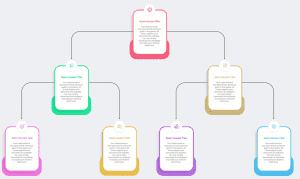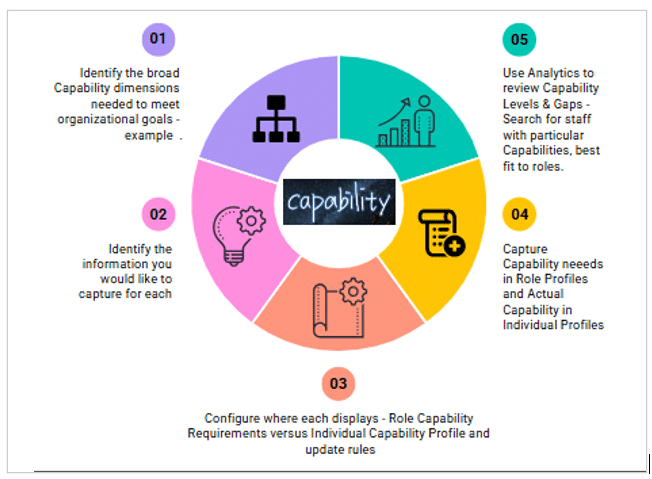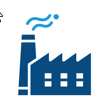
Role and Capability Frameworks/Architecture
What are Role and Capability Frameworks?
Defining the foundation of workforce capability
A Role and Capability Framework (sometimes called a Role Architecture) provides the structural foundation for workforce planning and talent management.
It defines what roles exist, what capabilities are required, and how those capabilities align with organizational strategy.
In Centranum’s model, capability frameworks extend beyond static job descriptions.
They link each role to the skills, knowledge, experience, and qualifications needed for performance — and to the competencies that demonstrate those capabilities in action.
Why Role and Capability Frameworks are essential
A well-designed framework gives organizations a single, consistent language for defining roles and measuring readiness.
It enables data-driven decisions about staffing, development, and succession.
Key benefits include:
- Clarity and consistency: Each role has transparent expectations for capability and competency.
- Strategic alignment: Capabilities directly reflect business objectives and operational risk controls.
- Career mobility: Employees understand the capabilities needed to progress between roles or levels.
- Integrated talent processes: Recruitment, assessment, learning, and performance management all use the same role-based capability data.
- Audit-ready assurance: Capability and competency requirements are documented and traceable.
Without a structured framework, organizations rely on variable role definitions and subjective assessments — leading to duplication, inconsistent standards, and increased compliance risk.
How it works
A Role and Capability Framework connects four key elements of workforce management:
- Define Job Roles
Document titles, key responsibilities, decision-making scope, and reporting lines.
Roles form the basic units of organizational capability. - Map Required Capabilities
Identify the specific skills, knowledge, experience, and credentials each role requires.
These define what “ready to perform” means for that position. - Link Competencies
For each capability area, define the observable behaviors that demonstrate capability in action.
Competencies are the applied subset of capability — proof that capability requirements are met. - Align with Organizational Goals
Group roles into job families or functions that reflect strategic priorities.
This ensures workforce planning and development directly support the organization’s goals. - Integrate with Talent Management
Once established, the framework underpins recruitment, assessment, learning, performance review, and succession planning — creating a single source of truth for workforce capability.
In Centranum: Each role profile becomes part of the organization’s Capability Architecture, and each employee’s Capability Passport tracks verified evidence — qualifications, experience, and competencies — against those role requirements.

Industry Examples
Role and Capability Frameworks adapt to any industry or workforce size.
They provide a consistent foundation whether defining technical, clinical, or leadership roles.
Manufacturing

Define technical roles like Quality Assurance Inspector with clear skills and experience requirements.
Healthcare

Document capability standards for clinical practice, including certifications and validated competencies for nursing and allied health roles.
Technology

Map engineering and IT roles with technical capability requirements and professional certification pathways.
Common questions about Role and Capability Frameworks
The FAQs below explain how role definitions, capability mapping, and competency alignment work together to create a consistent, evidence-based foundation for workforce management.
FAQs
What is the difference between a job role and a capability?
A job role defines responsibilities and scope within the organization.
A capability defines the knowledge, experience, and qualifications needed to perform that role effectively — including the competencies that show those requirements are being applied.
What is the difference between a framework and an architecture?
A framework provides the structure for defining roles and capabilities.
An architecture shows how those roles and capabilities connect across the organization — creating consistency and visibility for workforce planning.
Why use a Role and Capability Framework?
It ensures consistency, clarity, and alignment between workforce capability and business goals.
Frameworks also provide traceability for compliance, simplify performance reviews, and guide professional development.
Can we use our existing job roles?
Yes. Existing job descriptions can be imported, reviewed, and standardized within the framework to ensure alignment with defined capability and competency requirements.
How does this integrate with other talent management processes?
The framework becomes the foundation for all talent modules.
Recruitment, learning, performance management, and succession planning all reference the same role capability data, eliminating duplication and improving data integrity.
